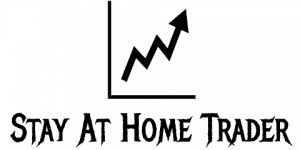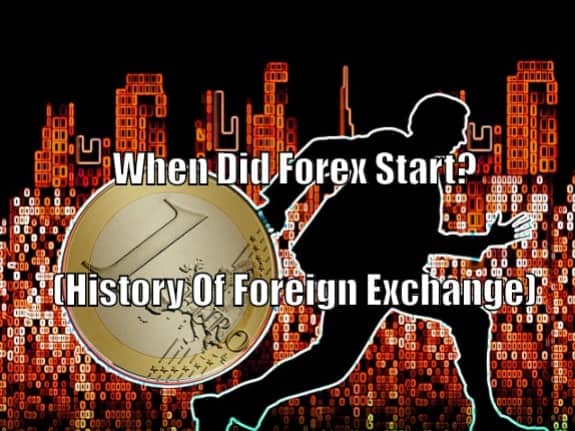The foreign exchange market or currency market is the decentralized market for the trading of all currencies of the world. Forex market is the largest financial market in the world and in terms of trading volume; the forex market is by far largest market in the world, followed by the credit market. Foreign exchange is done mainly for three purposes:
- Trading,
- Tourism, &
- Commercial
Generally, the forex market revolves around these three factors. Earlier, there was no availability of electronic devices and trade using that device. Earlier, before the gold standard system, countries would commonly use gold and silver for the purpose of international payment.
So, When did FOREX start? The foreign exchange market started with the creation of the gold standard monetary system in the year 1875, it is one of the important events in the history of the currency market.
HISTORY & EVOLUTION OF FOREIGN EXCHANGE
Earlier, it was very difficult to process for international payment due to the absence of technologies available now. Many systems applied for the purpose of forex exchange but failed. Here is the history & evolution of the foreign exchange market:
Gold Standard System
The Gold Standard System was established in the year 1875. Earlier, before the gold standard was established, countries were commonly using gold and silver as a method of international payment.
The main issue in the international payment through gold and silver was that the value of metals greatly affected by the global demand and supply. Hence, the basic motive for the creation of the gold standard system was governments assured the conversion of currency into a specific amount of gold. Governments were needed an ideal substantial gold reserve in order to meet the demand for currency exchanges.
Eventually, the gold standard system was broke down at the beginning of World War I. Though, the gold standard system would make a little comeback between the wars, most of the countries had dropped it again due to World War II. Earlier, the gold was the ultimate form of monetary value.
Bretton Woods System
Before the end of World War II, the Allied nations felt the need to set up an ideal monetary system in the world for the purpose to carry effective international payment system. More than 700 representatives from the Allies met in Bretton Woods in July 1944, for the discussion on the international monetary system.
The discussion in Bretton Woods led to the formation of the following:
- The US dollar replacing the gold standard system to become a primary reserve currency,
- The method of forex exchange rates,
- The creation of international agencies to supervise the economic activity. Those three agencies are the International Bank for Reconstruction and Develop, the International Monetary Fund (IMF), and the General Agreement on Tariffs and Trade (GATT).
These are the main discussion held in Bretton Woods and the final conclusion was to replace the US dollar as the main standard of convertibility of any currency in the world. The United States’s dollar became the only currency in the world that would be backed by the gold. This became the only primary reason why Bretton Woods failed and finally, the US President on 15th August 1971, refused to exchange the US dollars for gold.
Over the 25 or more years, the Bretton Woods system ran into many consequences and in the early of 1970, the US gold reserve was very less that the Treasury did not have sufficient gold to cover all the U.S. dollars that central banks had in the reserve.
The reason why Bretton Woods failed was the US dollar was in high demand and there were limited gold reserves to support high demand. And, in the end, the global economy slows down and Bretton Woods failed.
Floating Exchange Rates
The Bretton Woods system was effective for a few years but due to the high demand of US dollars and limited gold reserves, this system failed. A floating exchange rate system is a regime where the currency’s price of a country is set by the forex market according to the demand and supply, relative to other currencies.
As mentioned above, the price in the floating exchange rate system is derived from the open market, based on the demand and supply. While, in the fixed exchange rate system, the price is determined by the government through the central bank. Here are some main key factors of floating exchange rates:
- A floating exchange rate is determined on the basis of the demand and supply on the open market.
- In the floating exchange rate system, government and the central bank keeps attempting to keep their currency price favorable for international trading.
- This exchange rate system became more popular after the failure of the gold standard system and the Bretton Woods system.
In the floating exchange system, long-term currency price changes mean relative economic strength and interest rate difference between countries and short-term currency price changes mean disasters, rumors, speculation and everyday demand and supply for the currency.
The extreme short term currency price changes may result in intervention by central banks, even in a floating exchange environment. Central banks and governments can step in when a nation’s currency rate is extremely high or extremely low.
A nation’s currency which is extremely high or extremely low could negatively affect the country’s economy, affects in trading and ability to pay off debts. The government and central bank attempt to implement many measures to move their currency to the more favorable price rate.
The Electronic Communications Network
The free-floating finance market was generally traded by large commercial companies, hedge funds, and banks because they have a good amount of money. Due to expansion in technology and the internet, it made possible for any investor in the world to invest in the forex market.
Brokers started appearing as market makers, the brokers place trades on the ECN network on their client’s behalf, selling at the slightly high price and this how they make the profit. Small/Retail investors, who take interest in the forex investing, can sign up for a good broker and they can start trading with a little amount.
Electronic communication networks made very simple to perform forex trading transactions, trading all from the comfort of your home. It made very simple for investors to trade all over the world regardless of investors’ time zone or location.
The Electronic Communication Network (ECN) was introduced in the year 1990 in the United States to facilitate electronic trading. This was the time when the internet and technology were developing day by day.
It became easy for the retail traders to sign up and start trading with the broker who is connected with the Electronic Communication Network. Due to the presence of the internet and technology, it became very easy for small investors to start investing as minimum as $100.
Conclusion
Therefore, the foreign exchange market was started with the creation of the gold standard system. And, when the gold standard system broke down, there was the need for an ideal exchange system which would be easy to implement. There the Bretton Wood system was developed after having a meeting of more than 700 representatives.
But, unfortunately, the Bretton Woods system also broke down. Floating exchange rate system became popular after the failure of both systems and finally, ECN was introduced for electronic trading in 1990, which totally changed the international monetary system.


